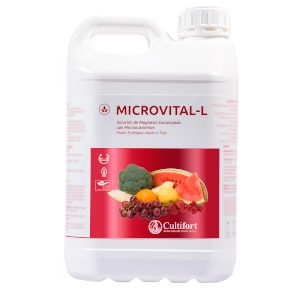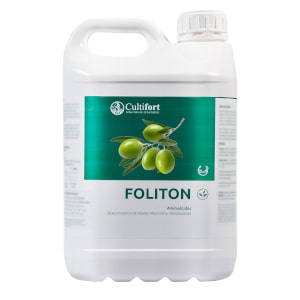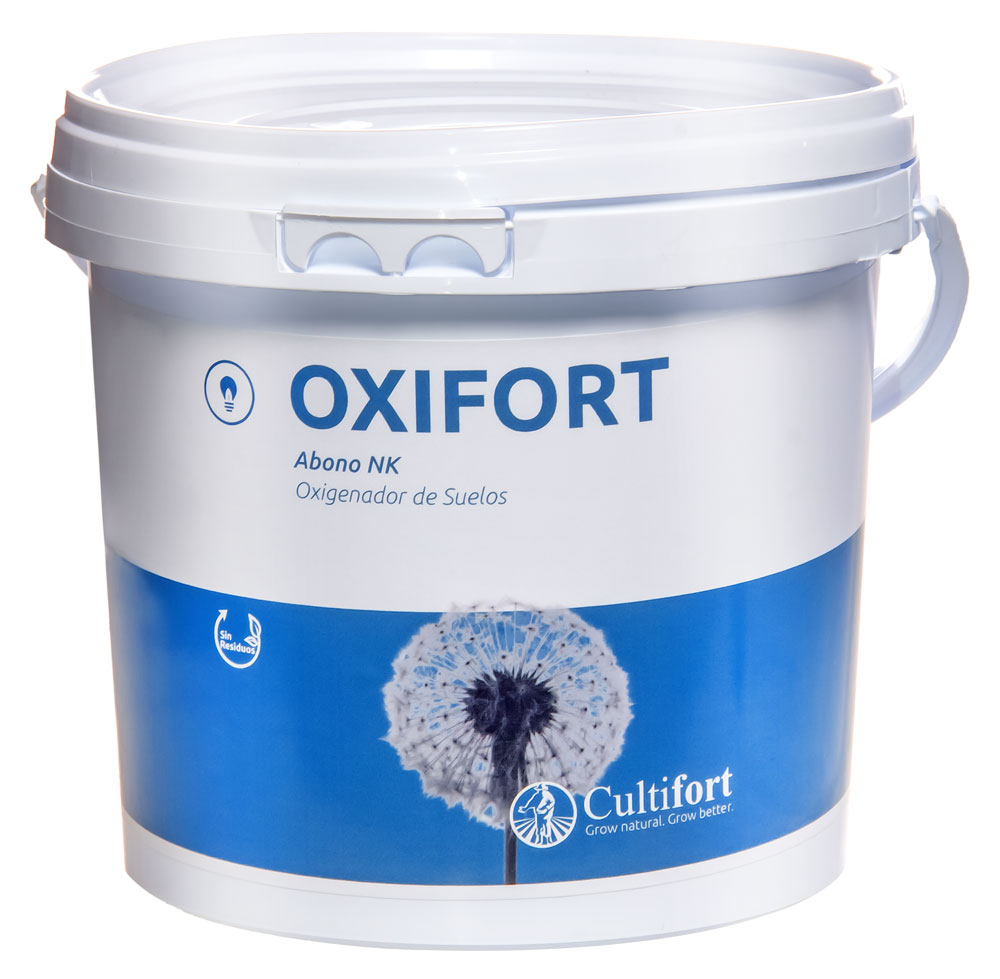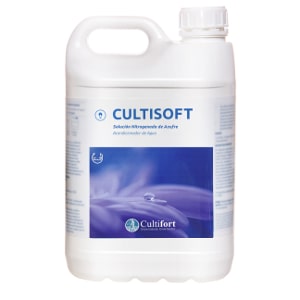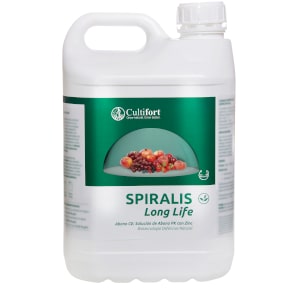Introduction:
Dive into the fascinating history of kiwi, an exotic fruit whose cultivation dates back to the wooded regions of the Yangtze Valley in China. Although its first cultivation attempts in the United States and New Zealand date back to 1905, it wasn’t until the 1940s in Plenty, New Zealand, that kiwi began to flourish and dazzle with its first commercial and export glimpses.
In the European context, France and Italy were pioneers in adopting this delicious fruit in 1967 and 1971, respectively, with Spain joining this tasty trend in 1973. Since then, kiwi has gained ground in the Cantabrian coast, especially in Galicia and Asturias, standing out as the emblematic fruit of the region.
Current Situation:
Today, kiwi in Spain is not just a reality but a genuine phenomenon! With 75% of the national production concentrated in Galicia and Asturias, the fruit has become a true treasure of the northern coast. Galicia leads the charge with 50% of the total production, reaching an impressive 15,000 tons, mainly destined for the domestic market.
However, kiwi is not satisfied with the coast; it is eager to conquer new lands on the peninsula. Although Galicia holds the crown, other regions such as the Valencian Community, Catalonia, Madrid, and Extremadura are exploring kiwi cultivation, challenging climatic and geographical conditions to meet the growing demand.
Spanish Kiwi: Unstoppable Growth:
In recent years, Spain has taken on the role of a leader in kiwi imports in Europe, with a per capita consumption of around 2 kg per person per year. The Hayward variety, with its classic characteristics, continues to reign, but the new and fascinating “gold” has emerged as a tempting alternative, with golden pulp and higher soluble solids content.
Spanish horticultural companies are in a constant race to increase their volumes, averaging 25,500 tons according to data from the Ministry of Agriculture, Fisheries, and Food. The growing demand has led to the exploration of new areas, such as the Valencian Community, in search of adapted climates and quality fruits.
The Challenge and Opportunity:
As mentioned, this study of adaptation or investment is driven by commercial interests based on supply and import seasonality, as fruits produced in the Southern Hemisphere reach Europe from June and extend their commercialization until December. Faced with this, there is a search for a niche to cover the demand from December to June. Under this premise and analyzing the data offered by previous campaigns at a general level, it satisfies the majority of kiwi producers and marketers in this sector link.
EVOLUCIÓN DEL COMERCIO EXTERIOR DE KIWI (+)
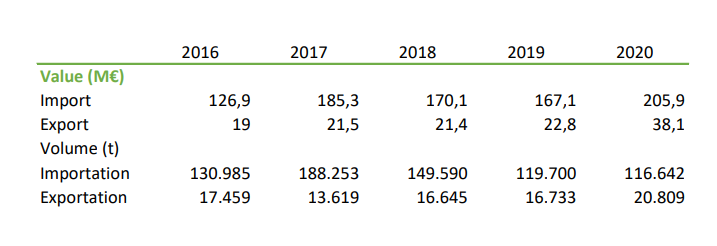
(+) Periodo de enero a octubre
However, Spain is still in the phase of study and adaptation to intensive kiwi cultivation if we exclude the centralized areas of Galicia.
Next, we present the latest worldwide production data from the last two previous campaigns.
Accumulated from January to October 2020
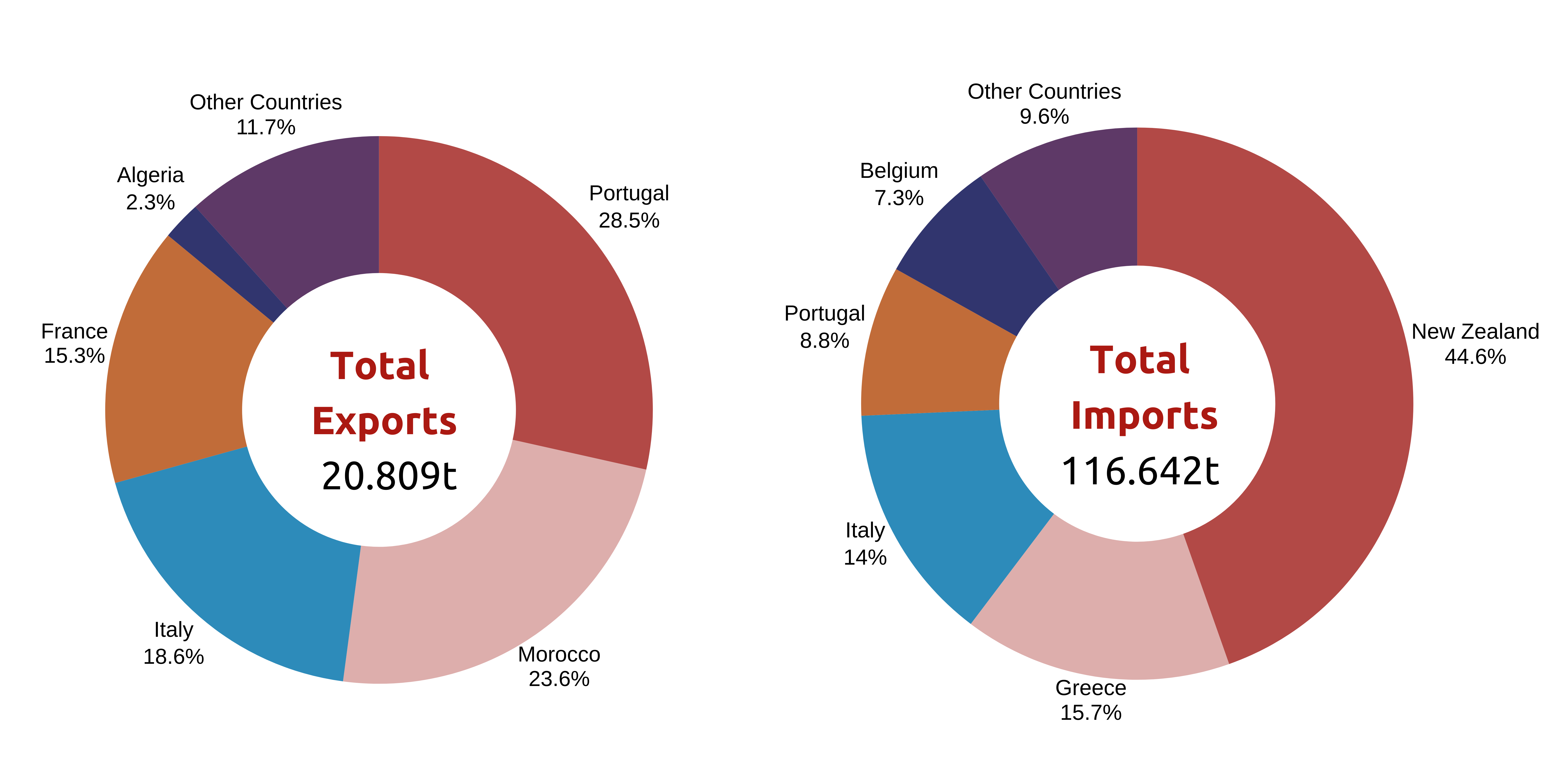
Source: Alimarket Gram Consumo with data from ICEX
The uncertainty of geographic readjustment due to domestic demand, coupled with the progressive increase in cultivated areas, is complemented by parallel studies on the industrialization of kiwi, leveraging its characteristics. This provides alternatives to fresh consumption, such as inclusion in ice cream bases, vinaigrettes, creams, and even in the cosmetic industry due to its high vitamin C content. Here are some of its properties:
-
High vitamin C content: Kiwi is recognized for being an excellent source of vitamin C, essential for the immune system, skin, and overall health.
-
Rich in fiber: It contains dietary fiber, which can improve digestive health, prevent constipation, and maintain a healthy digestive system.
-
Antioxidants: Kiwi contains antioxidants such as vitamin C and E, as well as phenolic compounds, which can neutralize free radicals in the body and protect against cellular damage.
-
Vitamin K contribution: It provides vitamin K, essential for blood clotting and bone health.
-
Low in calories and fats: It is a relatively low-calorie and low-fat fruit, making it a healthy option for those looking to control their weight.
-
Aids in digestion: Enzymes present in kiwi, such as actinidin, facilitate the breakdown of proteins, contributing to digestion.
-
Blood pressure regulation: Studies suggest that regular consumption of kiwi may help reduce blood pressure, possibly due to its potassium content. Skin benefits: Vitamin C and other antioxidants present in kiwi contribute to maintaining skin health, promoting collagen production.
-
Blood sugar control: The fiber present in kiwi can help regulate blood sugar levels, benefiting individuals with diabetes.
Promotion of ocular health: Kiwi contains lutein and zeaxanthin, two antioxidants that contribute to eye health and reduce the risk of macular degeneration.
To strengthen this commercial drive, it is now crucial to introduce agronomic variables in its cultivation, as it proves to be a crop sensitive to the alteration of certain variables in its management. First, we will examine the necessary climatic conditions for kiwi, and then we will analyze the difficulty of adaptation to areas where the conditions of the northern coast are not present.
AGRONOMIC MANAGEMENT NEEDS
Climatology, Temperatures, and Associated Irrigation Needs
It requires a semi-warm and temperate climate with average and mild temperatures of 15 ºC annually, high ambient humidity, and elevated and frequent rainfall, even in spring and summer months.
It withstands winter frosts well, even with averages of -10 ºC, although it is sensitive to spring frosts when flowers and fruits are present, being susceptible to low temperatures, hence its high adaptation difficulty.
Temperature, wind, ambient relative humidity, rainfall, and insolation are the most influential climatological factors in the development and production of this species and can become limiting factors for its cultivation.
The influence of temperature is primarily due to the possibility of spring frosts, as temperatures of -2°C or -3°C for several hours can be sufficient to destroy the early shoots that are the only ones that bear fruit, resulting in the loss of the year’s production. However, during winter dormancy, it can withstand temperatures of -20º; however, starting in February when sap movement begins, temperatures below -10º can damage the trunks at the neck level.
The vegetative zero is between 7 and 8°C. However, the winter cold needs do not seem to be perfectly quantified for each cultivation area, estimating them globally between 600 and 800 hours per year, decisively influencing the subsequent development of buds when this threshold is not reached.
The installation of sprinkler irrigation or stoves offers the possibility of protection against spring frosts, although these systems significantly increase cultivation costs and also present serious disadvantages for their application.
The annual averages of radiation in the cultivation area must be taken into account for its management, as excessive water loss through transpiration can occur since it is sensitive to vegetative stops and fruit growth stops under such stress. It is known that the average radiation levels outside the northern coast are excessive, and each campaign sees them increasing.
Linked to this, it should be noted that the maximum humidity needs can occur in the months between May and September, with this crop having high sensitivity to imbalances due to water stress correlated to humidity, managing optimal levels of 75% RH.
Therefore, it requires an average rainfall of about 100 mm per month during these dates, another variable nonexistent in most of the peninsular extension, a variable that can be compensated through irrigation or micro-sprinkler installations, which increase production costs, making its margins less competitive. It is recommended to have average availabilities exceeding 1,000 m3 of water per ha and month, and 5,000 m3 per ha and the indicated period, in addition to this, the water must be of high quality, with low contents of calcium carbonate and chlorides.
Soil Characteristics
It requires loose, non-heavy soils, being very sensitive to root asphyxiation and requiring high organic matter content with a neutral to slightly acidic pH.
The Kiwi root system requires well-draining support of sandy loam texture.
Another limiting factor across the national expanse.
On the contrary, it is not suitable for shallow water tables, with elevated clay and active lime content.
Considerations regarding productive performance.
Effective pollination is required through male varieties and biological support, so increasing the fertility of the female flower and the quality of the pollen are fundamental variables in its management.
On the other hand, it is highly sensitive to diseases of fungal origin and nematodes of the Meloidogyne spp genus, highly standardized on the peninsula.
CONCLUSION
We observe a rising trend in the cultivation interest of kiwi and its implementation in other areas that involve production satisfying an annual demand at the national level. Studies suggest a potential high profitability for both consumer markets and parallel industries. However, its management is complicated due to the high sensitivity it exhibits when deviating from its production standards. To optimize and mitigate these variables, it is essential to consider a comprehensive program tailored to influence and regulate every phenological stage of this crop.
How is kiwi cultivated?
- Site Selection: Kiwi thrives in temperate climates with cool winters and warm summers. It’s essential to choose a location with well-drained soil and good exposure to sunlight.
- Variety Selection: There are various kiwi varieties, some self-pollinating and others requiring both male and female plants for pollination. Make sure to select appropriate varieties based on the conditions of your region.
- Planting: Plant kiwis in spring or fall, spacing the plants at least 3-4 meters apart to allow for optimal development.
- Soil: Kiwi prefers slightly acidic to neutral and well-drained soils. Improve the soil with organic matter before planting.
- Irrigation: Keep the soil consistently moist, avoiding waterlogging. Water regularly, especially during dry periods.
- Fertilization: Apply a balanced fertilizer in spring and early summer. Avoid excessive nitrogen-rich fertilizers, as this can negatively impact fruiting.
Cultifort presents a comprehensive program of nutrition and phenology-based bio-stimulation with outstanding solutions for the proper development of kiwi, applicable throughout all phenological stages.
- MICROVITAL-L:Organic liquid formulation with magnesium that benefits soil life, improves physical structures, and prevents micronutrient deficiencies. Certified for organic agriculture (CAAE).
- FOLITON: Amino acids designed for enzymatic and hormonal functions, effective against various types of stress in plants.
- OXIFORT: Fine granules that release oxygen when diluted in water, improving air and water circulation in the soil, preventing root asphyxiation, and promoting root system development.
- CULTISOFT: Water conditioner for fertilizer and phytosanitary treatments that softens water, stabilizes solutions at an acidic pH, acts as a wetting agent, and enhances the effectiveness of phytosanitary treatments.
- SPIRALIS Long Life: Liquid formulation of phosphopotassic fertilizer that stimulates local and systemic plant resistance, acting preventively and curatively against fungi, bacteria, nematodes, and viruses. Immediate absorption and long-lasting protection.
- Pruning: Perform pruning to maintain the plant in a manageable shape and promote good exposure to the sun. Remove dead or damaged branches.
- Pollination: If you cultivate a variety that requires cross-pollination, make sure to have both male and female plants to ensure fruit production.
- Frost Protection: Protect young plants against frost during the winter.
- Harvest: Harvest usually occurs in autumn when the kiwis are ripe. Collect the fruits carefully to avoid damage.
BIBLIOGRAFÍA Y FUENTES
- Ministerio de Agricultura, Pesca y Alimentación (Mapa).
- https://www.alimarket.es/
- Guía para el cultivo del kiwi: GARCÍA RUBIO, JC.; GARCÍA GONZÁLEZ DE LENA, G.
- Área de Experimentación y Demostración Agroforestal.
- Manejo y rentabilidad del cultivo del kiwi en la zona mediterránea J. MALAGÓN: Jefe de la Sección de Fruticultura del Servicio de Desarrollo Tecnológico del Instituto
- Valenciano de Investigaciones Agrarias (IVIA). Manual del cultivo del KIWI (Actinidia chinensis). CIREN cORFO Centro de información de recursos naturales. Publicación CIREN N° 73 diciembre 1988. Cultivo del kiwi. técnicas aplicadas a la mejora de la producción y conservación: Verónica Otero Abalde. Universidad de Vigo (España) en 2008


